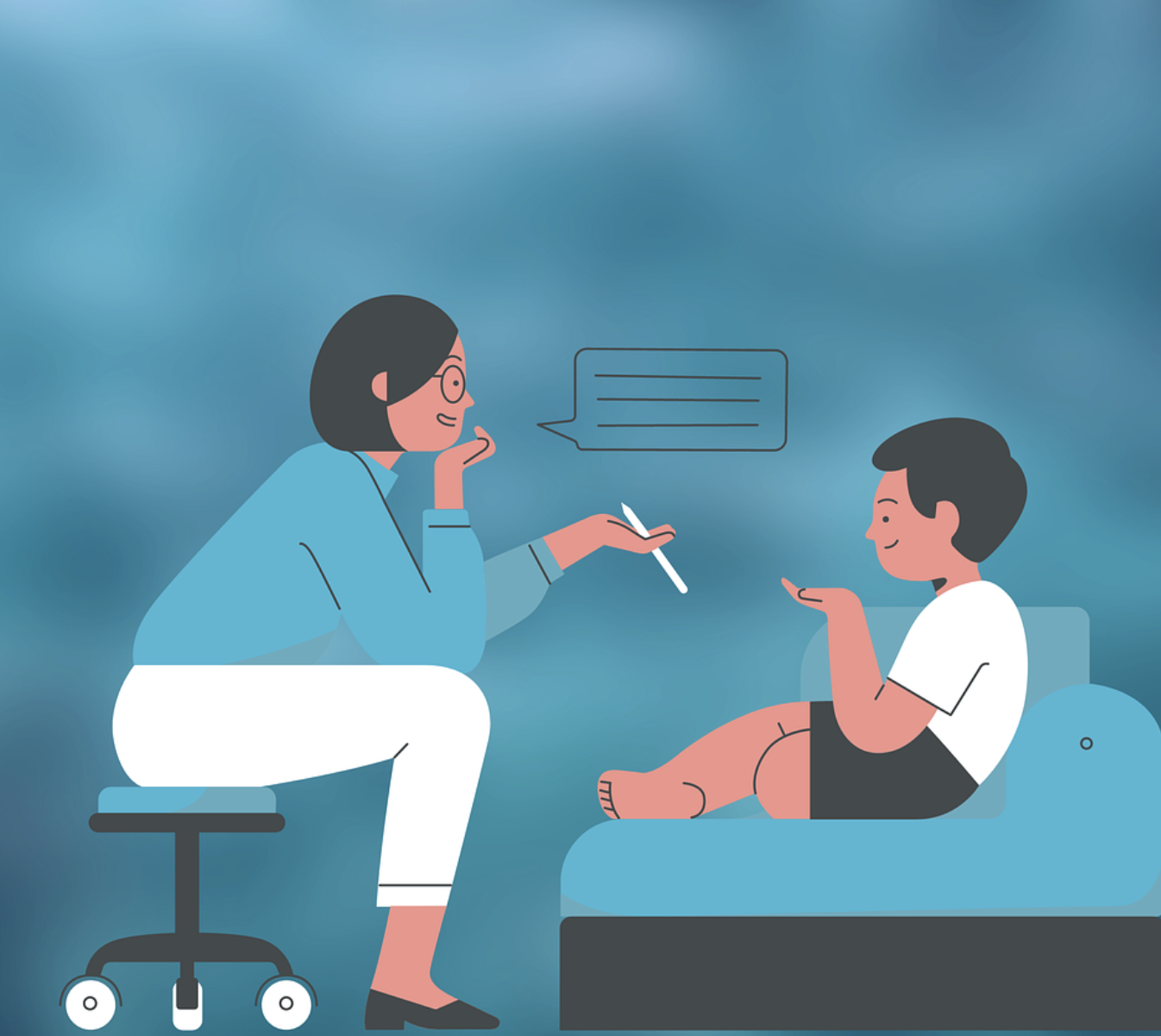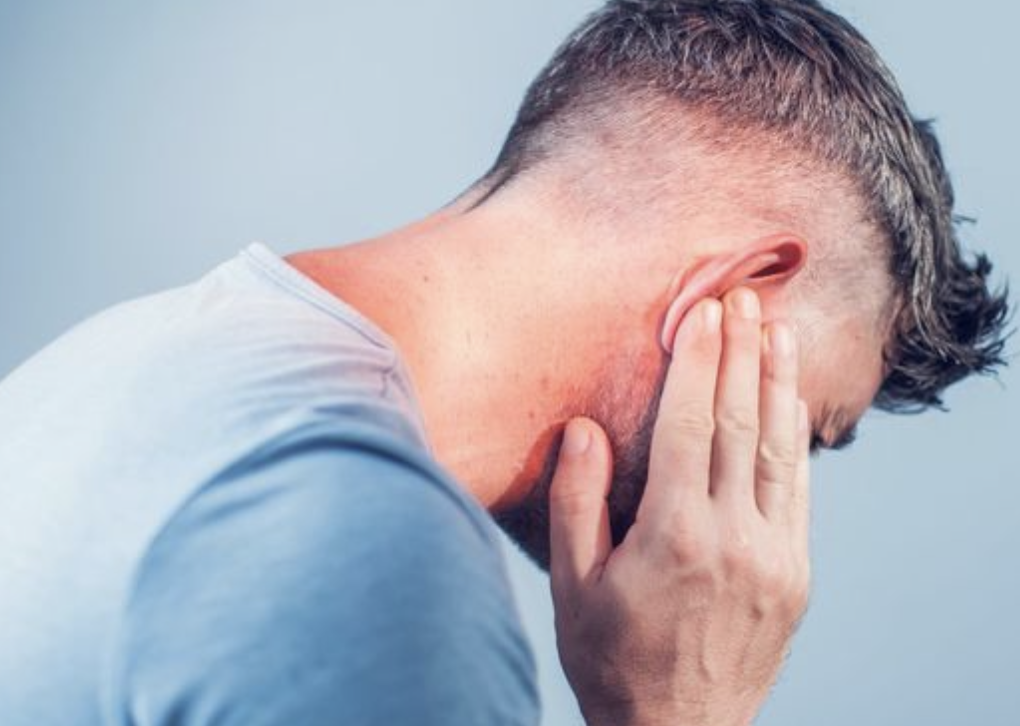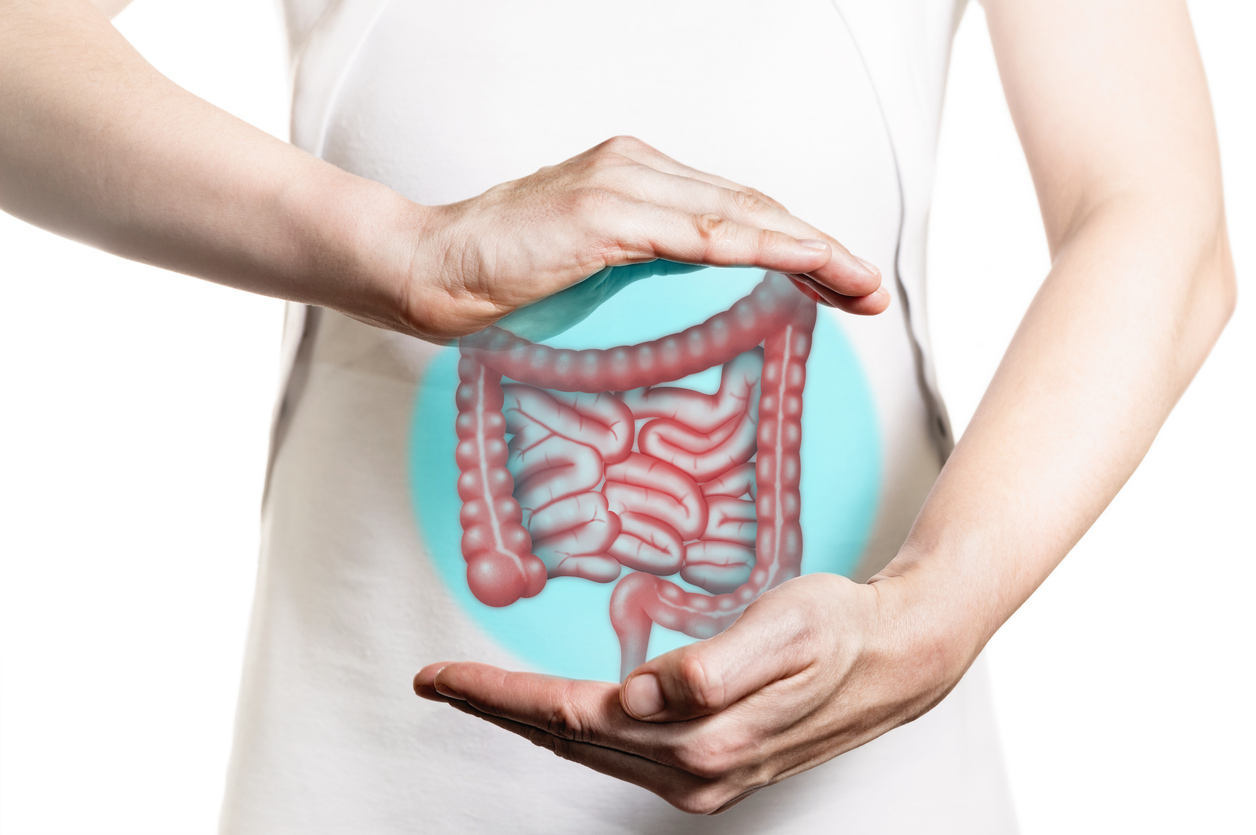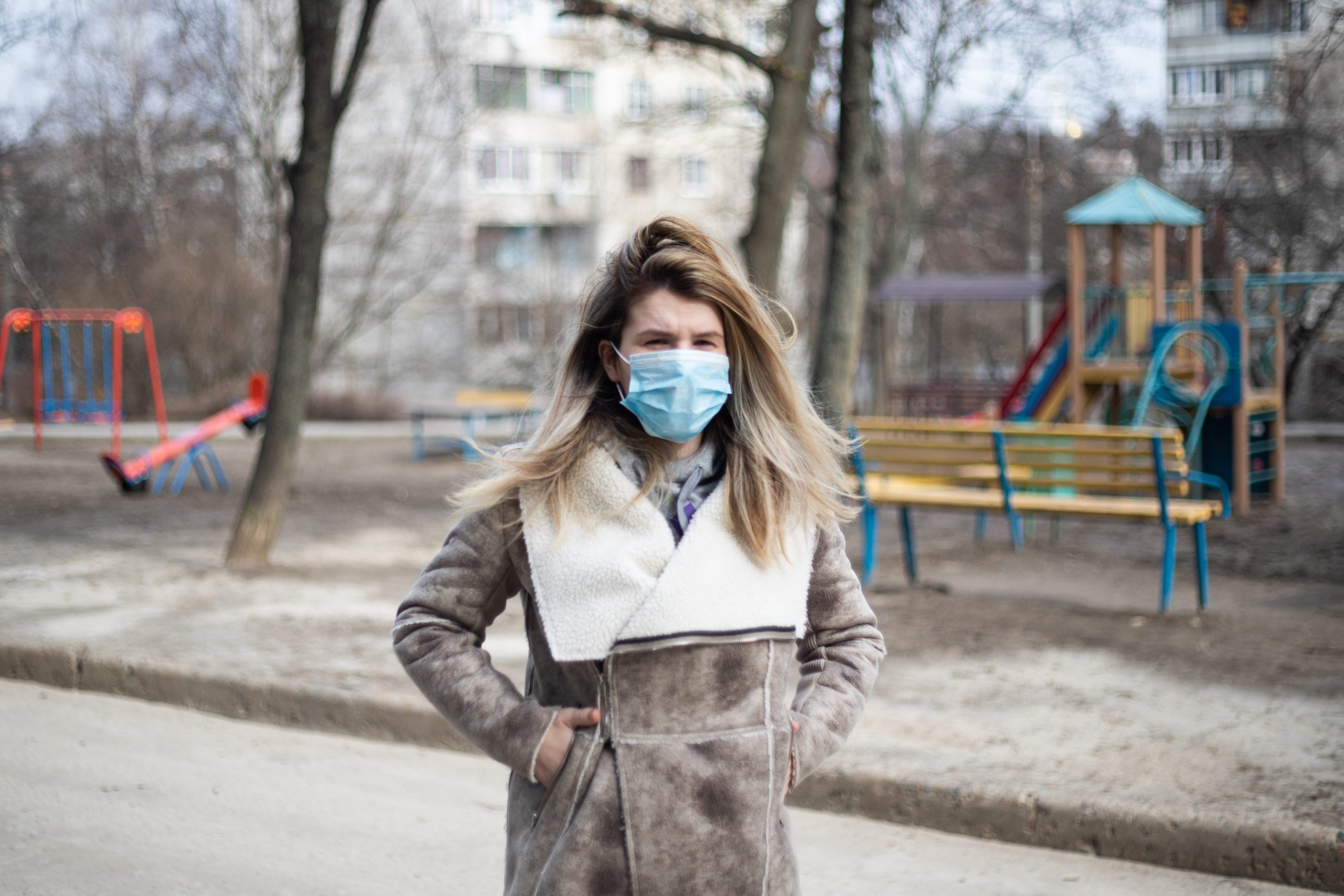
Strategies for Coping
During the COVID-19 pandemic, people experienced a wide range of emotions. These emotions shifted in intensity depending on the rising number of cases, the polarized discourse on social media and in the press, and the constant hope (never lost!) that one day life would return to some form of normality.
Among the most difficult emotions to handle are those we struggle to name. One of these is languishing.
We asked our psychologist and Cognitive-Behavioral Psychotherapist Dr. Silvia Riva, who specialises in Acceptance and Commitment Therapy (ACT), to help us better understand this phenomenon.
What is Languishing?
The word languishing comes from the Latin languere, meaning weakness, listlessness, or lack of motivation. It describes a set of difficult-to-manage emotions. Though not a diagnosable mental disorder, languishing encompasses feelings of fear, anxiety, monotony, and emptiness.
After nearly two years spent away from loved ones and social contact—often in isolation and plagued by monotony—it is entirely normal to feel a sense of emptiness, lack of motivation, and uncertainty. Languishing is closely linked to the challenges of lockdowns and the direct or indirect experience of illness. Unfortunately, this unpleasant state can become chronic, manifesting as a persistent sense of stagnation or numbness.
What Are the Consequences?
Languishing undermines motivation, clouds our ability to concentrate, and makes us less effective at school or work. Its effects show up in various aspects of daily life:
- Less desire to try new things
- Little interest in making future plans
- Negative thoughts about the future
- Low expectations
- Difficulty making decisions
When experiencing languishing, it can feel as though you’re watching your life from a train stuck at the station, while others continue to move forward.
Who Is at Risk?
We are all potentially susceptible to languishing. Recent studies have reported high levels of languishing in several professional groups, particularly among healthcare workers. However, the phenomenon is also spreading widely among adolescents and young adults, who have endured long periods of isolation and lack of social interaction.
What Can Be Done?
The first step is learning to recognize this unpleasant feeling. There are several warning signs to watch for:
- Feeling more tired than usual
- Skipping exercise routines
- Putting off enjoyable activities like dinners out, chatting with friends, or weekend getaways
- Withdrawing from people and life in general
In such situations, psychological support can be crucial. A professional can help shift your perspective, focus on present opportunities, and confront negative emotions.
Often, the key lies in accepting how we feel, and starting from there—without trying to control our thoughts or emotions unnecessarily. Acceptance can be the first step toward reclaiming our direction and vitality.

Difficulties with attention in children affect inhibitory and self-control behaviors and can significantly impact academic performance. These difficulties are closely linked to emotional well-being and often affect family life.
ADHD (Attention Deficit Hyperactivity Disorder) is a neuropsychiatric disorder caused by functional alterations in specific areas of the central nervous system—particularly the brain circuits responsible for inhibition and self-regulation.
Symptoms of ADHD
ADHD symptoms appear in two main domains: inattention and hyperactivity/impulsivity.
Inattention symptoms:
- Difficulty focusing on details
- Trouble maintaining attention for extended periods
- Difficulty following verbal instructions
- Problems with organization
- Easily distracted by external stimuli
Hyperactivity and/or impulsivity symptoms:
- Difficulty staying seated
- Excessive talking
- Trouble controlling impulses
- Blurting out answers
- Difficulty delaying gratification or waiting their turn
ADHD Assessment and Intervention
Clinical observation and evaluation are done using:
- Structured interviews
- Questionnaires for parents and teachers
- Standardized diagnostic tests
These tools help assess the child’s overall profile—both cognitive and emotional.
Every child has a unique profile, and the intervention plan must be personalized accordingly.
The intervention typically involves three main components:
- Parental training
- Emotional support through individual or family therapy
- Support from a specialized tutor or educator, to help the child develop strategies for autonomy and homework management
- Classroom strategies to optimize the child’s strengths
- Pharmacological treatment, when necessary
How is ADHD Diagnosed?
- Initial interview (Anamnesis): Gathers information on the child’s development, family life, and social functioning.
- Further assessment: Focused on identifying ADHD-related traits (attention, inhibition, impulsivity, planning) in multiple settings—at home and in at least one other social environment (e.g., school).
- Questionnaires: Parents and teachers are asked to fill out detailed questionnaires to evaluate symptoms.
- Feedback session: Based on all the data collected from home and school observations, recommendations are shared with the family for school-based and clinical/home interventions.
Expert Interview: Dr. Suzana Corciova, Child and Adolescent Psychiatrist
How is a child with ADHD evaluated?
The evaluation includes an initial structured interview with both parents and child. The goal is to understand the child’s development and everyday functioning in school, play, and social settings.
The family and school are given behavioral observation questionnaires, covering emotional, cognitive, and social aspects.
Families should also provide any previous evaluations or school reports.
When should you ask if your child has ADHD?
ADHD is one of the most common developmental disorders, and symptoms can persist into adolescence and adulthood.
The core feature is a persistent pattern of inattention and/or hyperactivity-impulsivity, which interferes with a child’s functioning and development from early childhood onward.
How to manage a child with attention difficulties?
The key is to create an environment that promotes self-regulation and reflection.
Since these children struggle with impulsivity, hyperactivity, and inattention, clear and direct communication is essential—give one instruction at a time.
At school, strategies like seating the child near the teacher or in the front rows can reduce distractions and help with behavioral control.

“Help! I’m afraid of gaining weight!”
During the holidays, it’s easy to give in to food temptations—especially after a long and difficult year. And then comes the guilt of overindulging.
But is it possible to enjoy holiday meals with family and friends without undoing all the progress you’ve made with your diet?
Luckily, there are some simple tips for those who want to enjoy the holidays without erasing their hard-earned results.
The goal is to avoid putting on excess weight—or worse, feeling unwell—after rich and abundant meals. So how can we enjoy the holidays and stay on track?
Why It’s Challenging
December is full of events: dinners, lunches, and parties become more frequent and can easily become an excuse to let ourselves go. But those who follow a healthy routine know that a few indulgent meals won’t ruin everything. What matters most is the long-term balance, over weeks or months.
You won’t gain half a kilo from eating two plates of lasagna. The human body is not a cash register—within limits, it knows how to handle excesses.
On the other hand, thinking you can binge during the holidays and fix it all in January is a mistake. As the saying goes:
“You don’t gain weight between Christmas and New Year’s, but between New Year’s and the next Christmas!”
So should you panic and hide the scale? Not at all! With a bit of discipline and some practical advice, Christmas and New Year’s don’t need to be scary.
We Asked Nutritionist Ilaria Carandente:
How should we behave during the holidays?
“When my patients ask me what to do during the holidays, my answer is always the same: Enjoy them!”
The key to a healthy diet is what you do every day, not the rare festive days. Holidays should be lived joyfully and without guilt.
Is it possible to follow a diet during the holidays?
“A healthy diet isn’t a race to lose weight fast. It’s about learning how to eat well so that you can allow yourself some flexibility when needed.”
So what do you recommend?
“I always suggest keeping indulgences limited to the actual holidays or family gatherings, which usually amount to just 4–5 days. Over the course of a year, that’s negligible.”
Any tips or tricks?
- Eat whatever you like, but in small portions so you can taste everything without overdoing it.
- Make conscious choices: pick one indulgence and skip another.
- Example: Eat pasta, skip the bread. Or enjoy dessert, skip the alcohol.
Any foods to avoid?
“If possible, avoid or limit fried food, nuts, heavy sauces, and sugary desserts. But if saying no to these puts your mood or motivation at risk, it’s better to enjoy them—then get back to your routine right after the holidays.”
🎄 In summary: Eat mindfully, savor the celebrations, and remember that balance over time matters more than a single meal. Happy Holidays—with no guilt attached!

Winter has arrived, and with it come the complications often triggered by colder temperatures. When the weather turns cold, many people experience ear pain or discomfort (acute otitis), along with nasal or throat irritation. However, symptoms caused by cold weather are often confused with infections, or vice versa.
Ear pain is one of the most common health complaints and can affect people of all ages. It may appear as a mild discomfort or as intense stabbing pain, in one or both ears. In most cases, if you’re lucky, it resolves on its own within a week or two.
The primary culprits are bacteria, and sometimes viruses, found in mucus that travels through the Eustachian tube, which connects the nose and ear. These microbes cause pus to accumulate in the middle ear, creating pressure against the eardrum.
Children are particularly vulnerable to ear infections because their Eustachian tubes are shorter and more horizontal, which allows easier passage of germs and fluid buildup.
Even daily habits can affect ear health. For example, using a hairdryer too close to the ear with high heat can create a temperature shock between the outer and inner ear, potentially triggering inflammation or infections.
Sudden temperature changes can be harmful not just for children but also for adults and the elderly.
In children, pain is usually the main symptom. In adults, it may show up as mild hearing loss or temporary discomfort, such as buzzing or ringing in the ears.
Simple Tips to Protect Your Ears in Winter:
- Dry your ears thoroughly after showering or bathing
- Use cotton swabs sparingly and gently, especially in children
- Limit excessive use of smartphones; use headphones and keep the volume low when listening to music
- During hair drying, keep the dryer at a distance from your ears to avoid overheating the ear canal
- If ear pain lasts more than two weeks, consult your doctor for a specialist visit
We asked Dr. Chiara Cerovac, ENT specialist, a few questions:
Does Cold Weather Cause Ear Infections?
Cold weather is not the direct cause of otitis, contrary to popular belief. However, it can indirectly contribute to middle ear infections, which are more common in winter due to the spread of viruses and bacteria associated with colds and flu.
Spending long hours indoors in close contact with others also increases the risk.
In summer, ear infections still occur, but they usually affect the outer ear canal, not the eardrum (e.g., swimmer’s ear).
How Can You Recognize Acute Ear Infections?
Acute ear infections cause intense pain, often accompanied by:
- Fever
- Hearing loss
- Tinnitus (ringing in the ears)
- Discharge of pus from the ear canal
Is It True That Mask-Wearing Reduced Ear Infections?
Yes. The use of face masks and social distancing during the COVID-19 pandemic significantly reduced the spread of infectious diseases, particularly respiratory infections.
As a result, ear and nasal infections in children dropped noticeably.
What Treatment Is Recommended for Acute Ear Pain?
If you’re experiencing severe ear pain, it’s important to see a doctor or specialist.
In the meantime, paracetamol or ibuprofen can help manage the pain.
After examination, the doctor may prescribe antibiotics, which are commonly used to treat bacterial ear infections.
“My Child Is Always Coughing!”

Cough in children is a very common issue and can be a symptom of several types of illnesses.
Coughing is actually a defense mechanism of the body. It helps expel irritants such as germs, dust, smoke, or mucus. For this reason, cough suppressants should generally be avoided, as coughing plays a protective role and should remain effective.
We talked about it with our paediatrician, Dr. Katy Vecchiato.
What Causes Coughing in Children?
In children, acute cough, especially when accompanied by cold symptoms or sore throat, is usually due to an upper respiratory tract infection.
- In the first few days, the cough is often dry and persistent,
- Later it may become productive (wet) with mucus.
- Duration can vary from a few days to up to three weeks.
Cough is a symptom, not a disease itself.
It’s important to evaluate other signs and the child’s overall condition, rather than focusing only on the cough.
When Should I Take My Child to the Paediatrician?
Seek medical attention if the child:
- Has trouble breathing (rapid or labored breathing)
- Wheezes or makes high-pitched sounds when breathing
- Appears very tired, weak, and has difficulty eating or drinking
- Is under 6 months old
- Has had a fever lasting several days
- Has been coughing for more than 4 weeks
- May have inhaled a foreign object (like food or a small item)
Home Remedies for Cough Caused by a Viral Upper Respiratory Infection:
- Hydration: Drink plenty of fluids (especially warm drinks), especially for wet coughs, to help thin the mucus and soothe an irritated throat.
- Ventilate indoor spaces regularly to keep the air fresh and clean.
- Use a humidifier (warm or cool mist) or place a bowl of water on the radiator to humidify dry air.
- Raise the child’s head while sleeping (by 30–45°) using an extra pillow to keep airways open.
- Nasal saline washes: Do them frequently (even 5–6 times a day). They help clear mucus and are especially useful for small children who can’t blow their nose.
- Warm milk with honey: A traditional remedy. But never give honey to children under 12 months of age due to the risk of infant botulism.
Cough in children is very common, especially in winter.
It often requires patience and supportive care.
For a consultation or to schedule an appointment, feel free to contact us.

We spoke with Dr. Maria Isabella Sereni, gynaecologist.
Human papillomaviruses (HPV) are double-stranded DNA viruses that primarily target the skin and mucous membranes of the anogenital and oropharyngeal areas. These viruses are extremely common across the global population. Of over 150 identified types, 14 are considered high-risk, as they are linked to the development of cancers in various areas: cervix, vulva, vagina, anus, penis, and head and neck.
HPV is primarily sexually transmitted, and it’s estimated that up to 80% of sexually active women will come into contact with the virus at least once in their lifetime. About 50% of those cases involve a high-risk genotype.
Globally, cervical cancer is the second most common cancer among women. Fortunately, 99% of cervical cancers can be prevented through screening and vaccination.
At our clinic, we offer a complete cervical lesion screening program that includes Pap smears, HPV testing, and colposcopy.
What Is Colposcopy?
Colposcopy is a diagnostic procedure that involves examining the cervix using a special optical instrument called a colposcope, which magnifies the view between 6 to 40 times.
Before the Exam
To prepare for a colposcopy, it’s important to:
- Avoid sexual intercourse, vaginal creams, suppositories, douches, or tampons for 48 hours before the exam
- Bring the results of your most recent Pap smears and any previous colposcopies
- Inform the gynecologist of any medications, especially blood thinners (antiplatelet or anticoagulants), or any allergies (iodine, contrast agents, or local anesthetics)
- The exam cannot be performed during menstruation, if there is heavy bleeding, or if there is severe vaginal inflammation
- Inform the doctor if you are pregnant – colposcopy is safe during pregnancy but requires tailored precautions
Q&A with Dr. Maria Isabella Sereni
Deputy Clinical Lead in Colposcopy at the John Radcliffe Hospital, Oxford, and expert in gynaecological cancer prevention and ultrasound diagnostics.
1. What is colposcopy?
Colposcopy is a second-level exam used to identify pre-cancerous lesions of the cervix (Cervical Intraepithelial Neoplasia, CIN).
2. How is diagnostic colposcopy performed?
The procedure involves inserting a speculum to visualize the cervix. The gynecologist then applies solutions – acetic acid and iodine – to highlight abnormal cells under the colposcope. If abnormalities are found, a biopsy is performed for histological analysis.
3. When is colposcopy recommended?
Colposcopy is usually recommended following an abnormal Pap test (cervical smear).
4. What infections can be detected with colposcopy?
Colposcopy can identify signs of high-risk HPV infection.
5. Is the exam painful? What are the risks?
Colposcopy is not particularly long or painful. The main discomfort comes from the use of the speculum, similar to a Pap test. If a biopsy is needed, one might feel cramping similar to menstrual pain, usually brief.
There are no significant risks, and it can be safely performed during pregnancy. Some patients may experience a vagal reaction (faintness or lightheadedness) due to cervical stimulation, but this is usually short-lived.

Mr Alex Leo, Colorectal Surgeon at Dottore London
If you are referred for an anorectal manometric test, today Mr Alex Leo at Dottore London offers a newer innovative technology able to get the results in a quick and reliable way. The new diagnostic test Anopress is a portable and wireless device that can be used as diagnostic examination in patients who suffer from faecal incontinence, constipation or other benign anorectal disorders. The newer technology lets us work with an estimated time of no more than 5 minutes compared to an approximate 30 minutes time of traditional devices. Therefore, the reduced procedure duration combined with the new ergonomic probes allow us to perform the test with only a minimal discomfort for the patient.
What is it?
Anorectal manometry is a specific test used for the accurate diagnosis of problems relating to the functioning of anal sphincters and pelvic floor in general. The examination can be useful for the diagnosis of many anorectal conditions, such as faecal incontinence, constipation, obstructed defecation syndrome (ODS), anal pain and anismus (pelvic floor incoordination). Manometry can also be used in the perioperative management for haemorrhoids or other minor benign anorectal conditions.
What does it involve?
The setting is similar to when the patient has the first colorectal consultation. The test is usually carried out in the outpatient clinic. The patient is instructed on basics commands such as squeeze, cough and push prior to the procedure. Before starting the procedure, the patient is then asked to lay down on the left lateral position in the outpatient couch. The physician then inserts an ergonomic and well-lubricated probe to the anal canal for a few centimetres (less than 10 cm) and takes all the necessary measurements. The test will take approximately 5 minutes causing no more than minimal discomfort.
Are there any special requirements prior to the test?
Patients do not need any bowel preparation or any other special training. All patients can continue taking regular medications and there is no need for fasting or other life-style changes. Furthermore, patients do not need to be accompanied by anyone on the day of the test as this is not invasive and there are no drugs administered during the investigation.
What is the rationale?
Anal manometry allows the study of the sphincter’s functions, which are recorded during the test while resting, squeezing and straining. In this way, the physician can read any abnormalities on the screen of the device used and can therefore identify any sphincter function anomalies. More specifically, this test helps the physician to identify incontinence issues related to the inability of the muscles to contract in a proper way or difficulties and problems in defecating due to the incomplete opening and release of the sphincters muscles.
Why is it innovative?
Mr Alex Leo at Dottore London offers a new modern anorectal manometry technology: THD® Anopress. This features several advantages compared to the traditional anorectal manometry. Firstly, the new technology consists in a probe connected to a compact device that measures changes in pressure in real time, so the patients can receive the results of the test immediately after the procedure with no need of a second time interpretation. Compared to the traditional probes, which are normally introduced up to the rectum, the Anopress’ probes are smaller and therefore inserted to a maximum depth of 10 cm. The examination does not last more than 5 minutes and these combined advantages allow us to reduce the discomfort reported to minimal avoiding severe distress and pain.

Mr Alex Leo, Colorectal Surgeon at Dottore London
Proctological examination: What is it?
A proctological examination is an essential diagnostic step if you have any intestinal and / or anorectal symptoms. This includes a careful and complete inspection of the anorectal area and, if felt appropriate, a digital rectal examination. In most cases, a proctoscopy or a rigid sigmoidoscopy is added to complete the examination.
Who should be referred for this examination?
Numerous anorectal problems can be easily diagnosed simply by a careful inspection of the perianal area. Anyone suffering from per rectal bleeding (bleeding from the anal canal), soiling, haemorrhoids (piles), skin tags, anal fissure, anal fistulae, perianal abscesses, pilonidal sinus, incontinence or constipation should see a specialist and have this examination done as soon as possible.
Proctoscopy and rigid sigmoidoscopy: what are they?
These two tests are used to diagnose various diseases or conditions of the anal canal and of the rectum and are often included in a proctological examination. In this way the physician is able to obtain a more accurate diagnosis and it also avoids any potential misdiagnosis. Special instruments called anoscopes and rectoscopes are used to carry out this examination. Mr Leo uses only the last technology offering the best treatment possible to the patients. The newest proctoscopes offer smooth and ergonomic instruments capable to reduce patient discomfort at the minimum.
Why do we call it advanced?
With the term advanced, we mean to offer a full examination inclusive of digital rectal examination and proctoscopy/sigmoidoscopy. Mr Alex Leo is a full-trained colorectal surgeon who also works and collaborates at St Mark’s Hospital, tertiary centre in the UK and one of the internationally recognised centres of excellence in treating patients with bowel symptoms. By offering an advanced proctological examination, we offer the best possible service to the patient aiming to avoid any possible misdiagnosis.
“More is missed by not looking than by not knowing” Thomas McRae (1870 – 1935).
Shockwave Therapy for Erectile Dysfunction: The newest treatment for impotence at Dottore London

Dr Fabio Castiglione– Andrologist and Urologist
If you are dealing with ED, you are not alone: ED is a condition that effects millions of men around the world. The good news is that today there are effective treatment options available which can help. Many cases of ED are caused by vascular issues. Extracorporeal Shockwave therapy is a relatively new and innovative method to treat vascular ED. It is painless and many patients report a noticeable improvement of their ability to achieve an erection within a few weeks.
The standard treatment options, including PD5 inhibitors (i.e. Viagra) or penile injection, treat erectile dysfunction as a symptom not treating the underlying causes. These treatments allow you to achieve on-demand erections before and during sexual intercourse, but they do NOT restore your normal erectile function and DO NOT reduce the penile fibrosis responsible for the impotence.
Shockwave therapy for ED: How it works?
Shock waves are not- audible high-energy sound waves. When applied to the penis, shockwaves cause minor damage to the penile tissue. During the healing process, new blood vessels are formed, which increase the blood flow to the penis. This may result in improved ability to get and maintain an erection.
Oral and penile injection therapy are symptomatic therapies for ED; they cure the symptom without changing erectile dysfunction, which persists unchanged when the effect of the drug ceases. Instead, low-intensity shockwave therapy aims to reduce the penile fibrosis and stimulate the regeneration of the cavernous tissue which can thus recover its functional efficiency.
Can I be treated?
In theory, shockwave treatment can help all patients with ED and even improve erection in men who do not have any problem, so much so that it can be used as a prevention for ED itself. A full diagnostic evaluation is important before proceeding with treatment to determine the optimal therapeutic protocol.
What are the expected benefits?
Shockwave therapy can benefit most men suffering from impotence and ED
There is a growing body of scientific evidence that shockwave therapy for ED can help in the following type of patients:
- Patients with mild to moderate ED that respond well to PDE-5 inhibitors might be able to regain their natural erections and no longer need – or reduce their dependence on medication.
- Patients with moderate to severe ED that do not respond to PDE-5 medication and rely on injections or other topical treatments may become more respondent to PDE-5 medication after shockwave therapy.
- Shockwave therapy will in most cases improve the results of other treatment modalities.
How the Shockwave session Works?
Shockwave therapy improves natural erections and can reduce impotence. In addition, shockwave therapy has the following advantages:
- Non-invasive treatment lasting 20 minutes – walk in and walk out within 30 minutes
- No medication required
- Fewer complications than other treatment modalities
- During your treatment session, a medical applicator, which delivers low-intensity shockwaves, is applied to your genital area.
- Each session is performed by our expert and certified Andrologist, Dr. Fabio Castiglione, in a medical room at Dottore London clinic, with little to no pain and discomfort
We recommend a minimum of 6 sessions (1-3 sessions per week) and up to 12 shockwave sessions for more severe ED cases.
For further information visit https://www.dottorelondon.com/service/andrologists-urologists/

A cura della dott.ssa Silvia Riva
Che cos’è la pandemic fatigue?
La pandemic fatigue (o stress da pandemia) può essere descritta come una condizione di stanchezza mentale nel seguire con perseveranza e attenzione tutti i comportamenti di prevenzione al contagio (e.s. il lavaggio delle mani, il distanziamento sociale, l’uso e il cambio della mascherina) e nell’accettare i divieti sociali prescritti dai nostri governi (e.s. non uscire di casa se non strettamente necessario).
Chi ha descritto la pandemic fatigue?
Si tratta di una condizione segnalata dall’Organizzazione Mondiale della Sanità (OMS) che si è riscontrata in tutti i Paesi del mondo sia tra le persone che hanno avuto l’esperienza diretta del contagio e sia tra quelli che non sono stati contagiati personalmente.
Perché non è da sottovalutare?
Perché si tratta di una condizione che crea un forte stress. L’uomo, al pari degli altri esseri animali, è pronto per natura a reagire al pericolo (ovvero a una situazione stressante). Tuttavia, quando lo stress diventa prolungato, il meccanismo si inceppa con conseguenze sui processi fisici e mentali. A livello fisico, lo stress prolungato può compromettere il nostro sistema immunitario rendendoci più vulnerabili a patologie e infezioni. A livello mentale, lo stress ci rende demotivati e con una percezione di noi stessi come meno capaci di far fronte a un evento negativo.
Quali sono i rischi nella vita di tutti i giorni?
Questo forte stress rischia di alterare la percezione della pandemia come una situazione del tutto imprevedibile e senza fine. Una percezione di questo tipo potrebbe rendere molto più difficile gestire i flussi delle persone durante i lockdown, implementare misure di prevenzione e comunicare le informazioni sulla salute (e.s. l’importanza di avere un sistema di tracciamento come risorsa per i cittadini oppure l’importanza di vaccinarsi).
Chi sono le persone più esposte?
Siamo tutti esposti alla pandemic fatigue in modo trasversale. Questo stress è purtroppo sostenuto anche dall’attuale situazione sociale nella quale si sono combinate insieme emergenza sanitaria con emergenza economica: problemi lavorativi, incertezza, smart working, aumento di povertà, difficoltà famigliari.
Inoltre, giornali e social media spesso non aiutano. Sono abituati a veicolare una quantità molto elevata di informazioni sulla pandemia, non sempre con coerenza, precisione e logicità. Un’informazione non precisa o non coerente ci rende più affaticati a livello mentale.
Che cosa possiamo fare come cittadini?
Come sottolineato dalla stessa OMS è fondamentale che le persone si percepiscano come parte attiva del processo per sconfiggere la pandemia. Qualche esempio?
- Attuare i comportamenti di igiene e prevenzione con sistematicità, come parte della nostra routine
- valorizzare gli aspetti funzionali dello smart working
- programmare con più consapevolezza la necessità delle nostre uscite da casa
- affidarsi a fonti di informazioni ufficiali e alla lettura dei lavori scientifici
- bilanciare con ragionevolezza i pro e i contro di affrontare un viaggio
Che cosa può fare la ricerca scientifica?
Alla St Mary’s University di Londra dove lavoro come Professore associato (Senior lecturer) insieme al mio ruolo come psicologa e psicoterapeuta a DottoreLondon, stiamo cercando di comprendere l’impatto dell’infezione a livello psicologico e, tra i diversi obiettivi, abbiamo anche quello di esplorare tale condizione. Il progetto (Unravelling Data for Rapid Evidence-Based Response to COVID-19, unCoVer, Grant ID:101016216) vuole identificare dei profili di rischio all’esposizione combinando dati medici con quelli sociali, psicologici, economici e territoriali in 29 Paesi.
